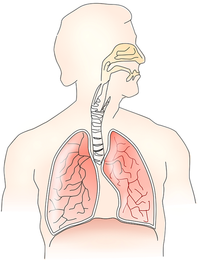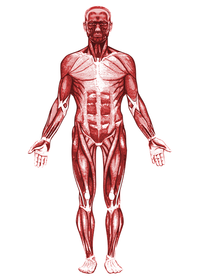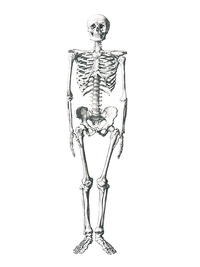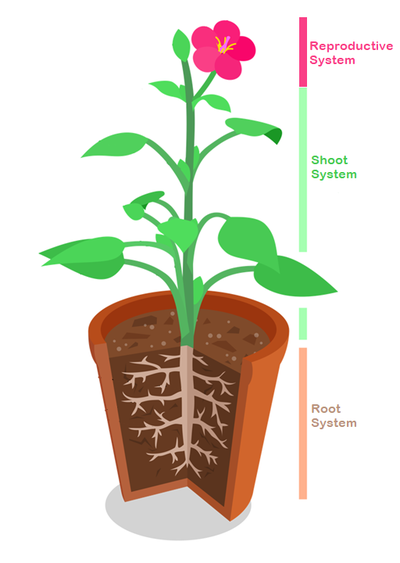Difference between revisions of "Organ System"
(→Key Stage 3) |
(→Key Stage 4) |
||
| Line 58: | Line 58: | ||
*Plant [[Shoot System]] | *Plant [[Shoot System]] | ||
*Plant [[Root System]] | *Plant [[Root System]] | ||
| + | |||
| + | ===Examples=== | ||
| + | {| class="wikitable" | ||
| + | |+ Organ systems in humans. | ||
| + | |- | ||
| + | |[[File:DigestiveSystem.png|center|200px]] | ||
| + | |[[File:CirculatorySystemUnlabelled.png|center|200px]] | ||
| + | |[[File:BreathingSystem.png|center|200px]] | ||
| + | |- | ||
| + | | style="height:20px; width:200px; text-align:center;" |The [[Digestive System]] [[Absorb (biology)|absorbs]] [[nutrient]]s from food. | ||
| + | | style="height:20px; width:200px; text-align:center;" |The [[Circulatory System]] transports [[nutrient]]s, [[oxygen]] and waste around the body. | ||
| + | | style="height:20px; width:200px; text-align:center;" |The [[Breathing System]] [[Absorb (biology)|absorbs]] [[Oxygen]] and removes [[Carbon Dioxide]] from the [[blood]]. | ||
| + | |- | ||
| + | |[[File:NervousSystem.png|center|200px]] | ||
| + | |[[File:HumanMuscles.png|center|200px]] | ||
| + | |[[File:HumanSkeleton.png|center|200px]] | ||
| + | |- | ||
| + | | style="height:20px; width:200px; text-align:center;" |The [[Nervous System]] controls the body and sends signals to and from the brain. | ||
| + | | style="height:20px; width:200px; text-align:center;" |The [[Muscular System]] allows the body to move. | ||
| + | | style="height:20px; width:200px; text-align:center;" |The [[Skeletal System]] supports and protects the body and produces [[Blood Cell|blood cells]]. | ||
| + | |} | ||
| + | |||
| + | {| class="wikitable" | ||
| + | |+ Organ systems in [[Flowering Plants]]. | ||
| + | |- | ||
| + | |[[File:PlantSystems.png|center|400px]] | ||
| + | |- | ||
| + | | style="height:20px; width:400px; text-align:center;" |The Shoot System, Root System and Reproductive System of a [[Flowering Plants|flowering plant]]. | ||
| + | |} | ||
Revision as of 10:30, 5 June 2019
Contents
Key Stage 3
Meaning
An organ system is a group of organs which work together to complete a vital function for the organism.
About Organ Systems
- Organ systems work together to keep an organism alive.
- Organ systems are specialised for certain roles.
Organ Systems you should know:
- Human Digestive System
- Human Circulatory System
- Human Breathing System
- Human Nervous System
- Human Muscular System
- Human Skeletal System
Examples
| The Digestive System absorbs nutrients from food. | The Circulatory System transports nutrients, oxygen and waste around the body. | The Breathing System absorbs Oxygen and removes Carbon Dioxide from the blood. |
| The Nervous System controls the body and sends signals to and from the brain. | The Muscular System allows the body to move. | The Skeletal System supports and protects the body and produces blood cells. |
| The Shoot System, Root System and Reproductive System of a flowering plant. |
Key Stage 4
Meaning
An organ system is a group of organs which work together to complete a vital function for the organism.
About Organ Systems
- Organ systems work together to keep an organism alive.
- Organ systems are specialised for certain roles.
Organ Systems you should know:
- Human Digestive System
- Human Circulatory System
- Human Breathing System
- Human Nervous System
- Human Excretory System
- Plant Shoot System
- Plant Root System
Examples
| The Digestive System absorbs nutrients from food. | The Circulatory System transports nutrients, oxygen and waste around the body. | The Breathing System absorbs Oxygen and removes Carbon Dioxide from the blood. |
| The Nervous System controls the body and sends signals to and from the brain. | The Muscular System allows the body to move. | The Skeletal System supports and protects the body and produces blood cells. |
| The Shoot System, Root System and Reproductive System of a flowering plant. |






